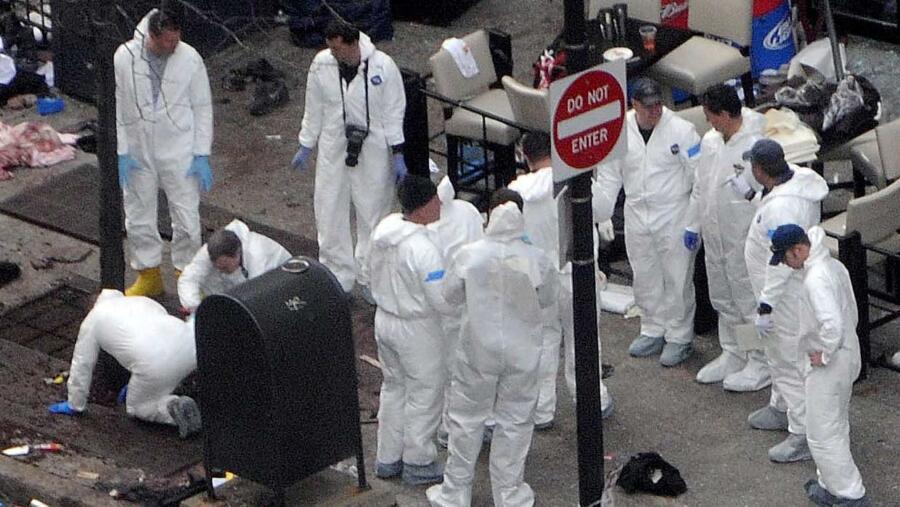Dr. Kirk Yeager, the FBI’s top explosives scientist, doesn’t just study what goes “boom.” He studies who makes it go boom—and why. Over the years, Yeager has investigated some of the world’s most notorious bombings, dissecting both the devices and the dangerous minds behind them.
From the 2002 Bali attack to the 2013 Boston Marathon bombing, Yeager has worked on scenes of chaos and loss, determined to prevent future tragedies. His book, The Bomb Doctor: A Scientist’s Story of Bombers, Beakers, and Bloodhounds, explores not only the technical side of explosions but also the psychological triggers behind them.
Why Bombs? The Psychological Power of Explosives
What drives someone to build and deploy a bomb? According to Yeager, the reasons vary but often boil down to control, power, and fear.
“For criminals, it’s often anger or revenge. A bomb is just another weapon—but one that lets them stay far from the scene,” Yeager explains. “Terrorists, on the other hand, want attention. A bomb creates fear that lingers. It doesn’t just hurt people physically; it destabilizes communities emotionally.”
Unlike a shooting or stabbing, a bombing sends a broader message. Its randomness and brutality echo long after the debris is cleared.
Explosive Forensics: Solving Crimes from Ashes and Shrapnel
For most crime scenes, investigators start with intact evidence. In bombings, Yeager says, you begin with destruction.
“It’s like solving a puzzle where many pieces are burned, melted, or blown to bits,” he says. Investigators must work backward from twisted metal, scorched wires, and trace chemical residues.
If an unexploded device is found, it offers a wealth of clues. But when the bomb goes off, every second matters. “You’re racing against time, fire, weather, and contamination,” Yeager notes. “What we can recover might be all we have.”
FBI’s Global Footprint: Investigating Bombings Around the World
While the FBI is a U.S. agency, its bomb experts are frequently called abroad. Yet, foreign investigations come with added hurdles.
“We may arrive days after an incident. By then, weather or human activity may have altered the scene,” Yeager explains. “Plus, local laws and politics affect what we can access.”
Even so, collaboration with international agencies has helped close high-profile cases. Trust, timing, and expertise remain key.
Boston Marathon Bombing: Lessons from Chaos
The 2013 Boston Marathon bombing presented rare and complex challenges. Two homemade pressure cooker bombs detonated in a crowded area, scattering victims—and evidence—over a vast space.
“There was what we call cross-scattering,” says Yeager. “Fragments from both bombs mixed, complicating identification.”
Compounding the chaos was the possibility of more bombs. “Every abandoned backpack became a threat,” he adds. First responders had to work with urgency and caution, balancing rescue with security.
Ultimately, a combination of forensic science, surveillance footage, and public assistance helped identify the attackers within days.
Innovation Meets Destruction: Technology’s Double-Edged Sword
Technology makes life easier—and more dangerous. Yeager emphasizes that the internet has revolutionized bomb-making.
“You can learn how to fix your car or bake a cake online. Sadly, you can also learn how to build a bomb,” he warns. Forums, videos, and DIY instructions offer step-by-step guides, putting deadly knowledge within anyone’s reach.
Additionally, modern tools like 3D printers and drones allow bombers to create devices or deliver them remotely. “Today’s threats aren’t just physical—they’re digital too,” Yeager says. “We have to keep up.”
Prevention Starts with Awareness: The Role of Everyday Citizens
Stopping bombings isn’t solely the FBI’s job. It requires a community effort. Through partnerships with Homeland Security and local law enforcement, the FBI educates vendors who sell chemicals commonly used in explosives.
“We train them to spot suspicious behavior. A guy buying ten bags of fertilizer and no crops? That’s a red flag,” Yeager explains. “No one wants these tragedies except those making the bombs. So we all need to stay alert.”
Informed communities can provide early warnings that save lives.
The FBI Explosives Scientist’s Warning: Stay Vigilant
As bombers grow more sophisticated, so must the experts who stop them. Dr. Yeager urges both vigilance and education. “The science is important, but so is the psychology,” he says. Understanding what motivates bombers helps predict their behavior—and disrupt their plans.
From shattered buildings to digital blueprints, every clue matters. With every case he works, Yeager gets closer to his ultimate goal: stopping the next explosion before it happens.
FAQs
Who is Dr. Kirk Yeager?
He is the FBI’s chief explosives scientist and one of the leading bomb forensics experts in the United States.
What is The Bomb Doctor about?
The book shares Yeager’s real-life experiences with bomb investigations and the science and psychology behind bomb-making.
Why do terrorists use bombs instead of guns?
Bombs allow attackers to strike from a distance and cause mass fear, amplifying psychological impact beyond physical damage.
What makes bomb forensics so challenging?
Unlike traditional crime scenes, bombs destroy much of the evidence. Investigators must piece together fragments and chemical traces.
Can everyday people help stop bombings?
Yes. Being aware of suspicious activity and reporting unusual purchases or behaviors can help prevent attacks.
How has technology changed bomb-making?
Advancements like 3D printing, remote detonation, and online tutorials have made bomb-making more accessible to bad actors.

